The NVIDIA SHIELD Tablet Review
by Joshua Ho on July 29, 2014 9:00 AM EST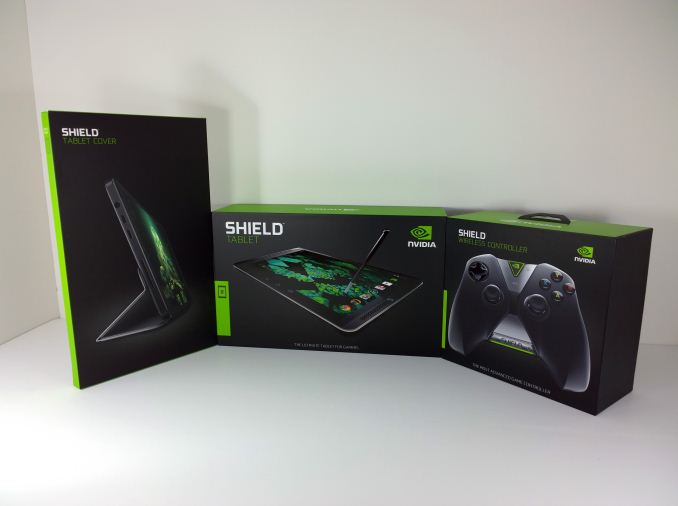
As I discussed in our launch article last week, the Shield tablet is very much the culmination of lessons learned from 2013. While the Tegra Note 7 was a decent tablet, it had to eke out a profit through hardware sales against competition that was willing to sell their tablets with no profit on hardware. Meanwhile the Shield portable was a good portable gaming device, but it was far too specialized to be anything but a gaming device. Without an established gaming ecosystem, NVIDIA struggled against established competitors.
As a result of these influences, today NVIDIA is becoming the first OEM to launch a serious gaming tablet running Android. While gaming tablets have been done before, they’ve been few and far between. Now it has always been technically possible to take a high end tablet and make it usable for gaming, but for the most part these attempts are marred by either the need for root or an application that requires extensive work on the part of the user to create proper control profiles for each game. In addition, the SoC in the tablet is often underequipped for intensive 3D gaming.
That’s where the Shield tablet comes in. With Tegra K1, a dedicated controller, 2x2 WiFi, and a huge amount of custom software, there’s definitely a lot of ground to cover. Once again, while the Shield tablet is a gaming device, it must also be a good tablet. To that end, NVIDIA has tried to differentiate this tablet with DirectStylus 2 and dual front facing speakers/bass reflex ports. I’ve included a table of specifications below to give a general idea of what the tablet is like.
| NVIDIA Shield Tablet | |
| SoC | Tegra K1 (2.2 GHz 4x Cortex A15r3, Kepler 1 SMX GPU) |
| RAM/NAND | 2 GB DDR3L-1866, 16/32GB NAND + microSD |
| Display | 8” 1920x1200 IPS LCD |
| Network | N/A or 2G / 3G / 4G LTE (NVIDIA Icera i500 UE Category 3/4 LTE) |
| Dimensions | 221 x 126 x 9.2mm, 390 grams |
| Camera | 5MP rear camera, 1.4 µm pixels, 1/4" CMOS size. 5MP FFC |
| Battery | 5197 mAh, 3.8V chemistry (19.75 Whr) |
| OS | Android 4.4.2 |
| Connectivity | 2x2 802.11a/b/g/n + BT 4.0, USB2.0, GPS/GLONASS, mini HDMI 1.4a |
| SIM Size | None or MicroSIM |
| Price | $299 or $399 (16GB/WiFi or 32GB/LTE) + $59 (optional controller) |
Hardware
Outside of the basic specs, the tablet itself has a much more subtle industrial and material design. While the large speaker grilles are maintained from the Tegra Note 7, the dimpled look and feel is gone. Instead, the finish is very much reminiscent of the Nexus 5. The feel isn’t quite rubbery the way soft touch finishes tend to be. Instead, it feels more like a high grain matte polycarbonate. Along the sides, there’s a noticeable chamfered edge where the back cover meets the display, although in practice this mostly affects aesthetics rather than in hand feel. The flip cover that is designed for the device is almost identical to the one in the Tegra Note 7, and folds up similarly. As with the Tegra Note 7, there are two angles that the flip cover can take. Overall, the aesthetic is much more subtle than the Tegra Note 7, and looks quite similar to the Nexus 7 (2013).
While it’s important for the tablet portion of the device to have decent material and industrial design, ergonomics and material design are critical for the controller. While the Shield portable had great ergonomics, it was heavy because the entire device had to fit in the controller. With Shield Tablet, that’s no longer the case. The result is that the controller is significantly lighter. While it still has some heft to it, I no longer feel the need to rest my hands against a table after significant playtime.
The controller itself is just as good as the one on the Shield Portable. The buttons, triggers, bumpers, and joysticks are all very close in feel. The one big difference are the tablet/Android controls. Instead of physical buttons, they’ve replaced the physical buttons with capacitive ones. The volume controls have also been moved down to the bottom of the controller and changed from a single button that triggers on-display volume controls to a rocker that allows direct manipulation of volume. Just above the volume rocker is a clickpad, which can be used to move a cursor through the UI. While this option exists, it’s a bit unpolished as the sensitivity isn’t tuned quite right to quickly navigate through the tablet.
Of course, there’s more to the controller than just the buttons and controls. NVIDIA has made sure to do things right by using WiFi Direct for communicating between the controller and the tablet. The frequency used depends upon what access point the tablet is connected to, so it can switch between 2.4 GHz and 5 GHz as necessary. NVIDIA claims that using WiFi Direct instead of Bluetooth drops latency by half, and also allows for microphone input and sound output via 3.5mm jack through the controller. In practice, the controller works great. I don’t have any complaints about this at all. Pairing is as simple as pressing and holding on the NVIDIA logo for a few seconds, then opening the pairing application. Up to four controllers can be paired to the tablet this way, which introduces interesting possibilities for local multiplayer games such as Trine 2. I also didn’t notice a difference in response time of the wireless controller when compared to the wired controller of Shield Portable. It’s incredibly important to get the controller right for gaming devices, and NVIDIA has nailed it. Overall, I’m happy with the basic hardware for both the controller and tablet. While it would be interesting to see a metal unibody design on the tablet, it’s difficult to justify at the price point that this device has to hit.
Of course, while hardware is important, software makes or breaks this tablet, so that’s next.


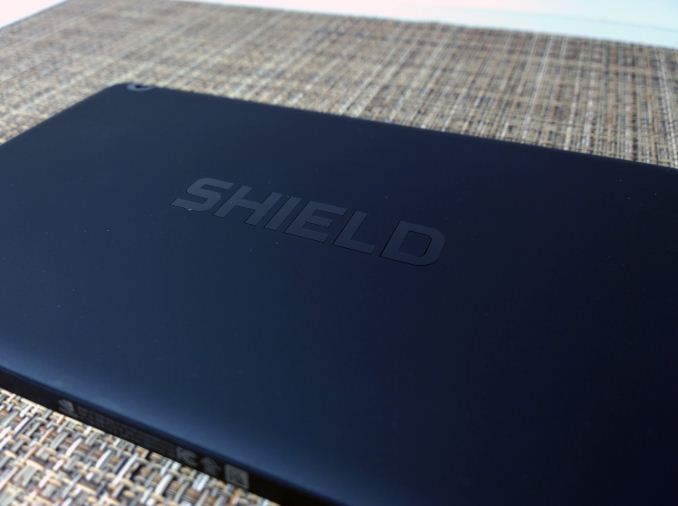
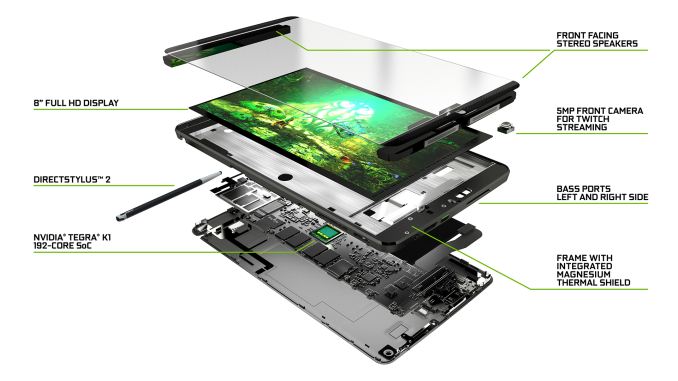
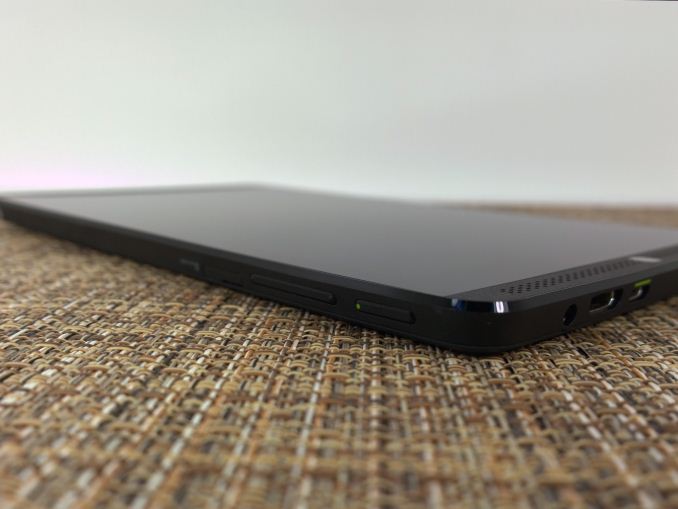
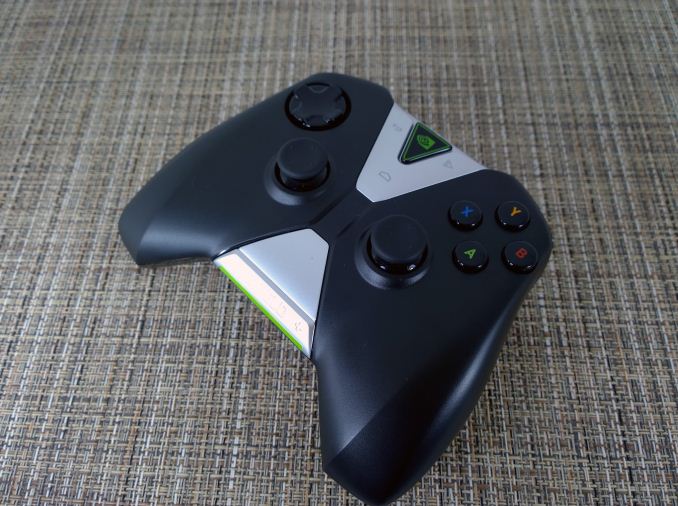








174 Comments
View All Comments
Stuka87 - Tuesday, July 29, 2014 - link
I think the tablet on its own is decent. Although it is very heavy for its size (Which BTW this review does not mention its weight anywhere).The controller is what I end up scratching my head over. In their release photos they show a girl gaming with the tablet, but sitting like 3ft away. As if being that far away would be enjoyable.
One other thing that is not clear, if the tablet is NOT on wifi, will the controller still work? The article makes it sound like you have to be on wifi.
Friendly0Fire - Tuesday, July 29, 2014 - link
WiFi *Direct* is a straight connection between the tablet and the controller using the WiFI protocol. It most certainly doesn't need a network to work.Stuka87 - Tuesday, July 29, 2014 - link
Hm, ok. But he specifically said it depends what type of wifi network you are on.lmcd - Tuesday, July 29, 2014 - link
That's for the connection band. Meaning that if one of the two Wi-Fi bands is in use for Wi-Fi, then the other one is the one that'll be used for the Wi-Fi direct.halca - Tuesday, July 29, 2014 - link
Really? That's it for the directstylus review section? I'm disappointed. I hoped to see more comparison between the old and new, and compared to wacom's tech on samsung note line.scbundy - Tuesday, July 29, 2014 - link
Shame about the screen, but with my old Nexus 7 broken and me looking for a gaming tablet replacement, this one appears to fit the bill perfectly. Especially since my gaming PC has a 780 GTX. Can't wait to try it out.dabotsonline - Tuesday, July 29, 2014 - link
"In essence, this device is already ready to serve as an Android TV device."I thought that Google are mandating a very specific UI design for Android TV devices - one which is very different from this? Do you have any inside info regarding the final version this fall / autumn, Josh?
aamir147 - Tuesday, July 29, 2014 - link
I think he means nvidia can eventually add an android TV mode when connecting via hdmi just like you can get a console mode.SpartyOn - Tuesday, July 29, 2014 - link
Personally, I love my Shield Portable (or whatever they're calling the 1st Gen device). Sitting in bed or on the couch streaming the game I just turned off at my desk is fantastic. It's also the best Android emulator device out there.The recent updates to allow outside the home streaming (which this article incorrectly states as only allowing in-home; please change) and 1080p Console Mode streaming via wired Ethernet, have made this a killer mobile gaming device. Instead of carting my mITX build back and forth when I want to play a game via controller on my HDTV, I can now simply hook up the Shield and stream the game, in full 1080p, to the TV and can hook up an XBOX 360 wireless controller with USB OTG. No more hauling a computer around the house or having to settle for a laptop! Seriously awesome.
My wife and I continuously fight to use the Shield when heading to bed, she for her emulators and me for streaming from my gaming rig. I REALLY want to pick up another one so that she can have her own, so I was hoping this was going to be a self-contained device like the 1st Gen, just with the K1 and maybe some weight balancing, an extra miniUSB port, and a 6" screen with less bezel (the bezel with the 5" is HUGE and I'm sure they could creatively get a slightly bigger screen in there).
Unfortunately, the new Shield device as a tablet is... underwhelming. Sure it has snazzy bells n' whistles for a tablet, but with the larger form factor and lack of handholding ease, this really kills a lot of its portability. I prefer the fully contained controller/screen of the original; plus, it was different and really created a new market. Now it's just another tablet in a crowded field. Seems like a dumb strategy to me.
Until they release a refreshed Shield Portable with the K1, I'll be keeping my money. Kudos to NVIDIA though for the 1st Gen device - I love it.
fivefeet8 - Tuesday, July 29, 2014 - link
Unfortunately, you're probably in the minority at this point and I do understand why some would prefer it that way. One of the reasons I didn't get the original shield is because you couldn't do much else with it besides gaming. Even though I loved the hardware and software, I wanted something that could encompass more. Something I could use for both work and play on mobile. The new Shield Tablet fits that almost perfectly.